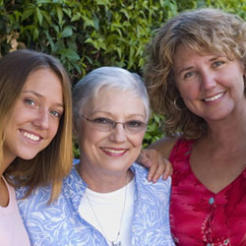Research released by the Women’s Philanthropy Institute (WPI) has revealed that women are more likely than men to give money for nearly every type of charitable cause.
Most fundraisers understand that women generally are more likely to support charity than men, but the Causes Women Support report, has found that this inclination to give is not limited to a few specific causal areas, but is spread across the spectrum.
The Causes Women Support report, released last week, found that, in comparing male and female single-headed households, women are more likely to donate than men to eight out 11 types of charities.
Of the three categories of charities that women were not more likely to give to than men - arts and culture, environmental organisations and 'other' - the study found that they were equally as likely to give.
The Women Give 2010 study was undertaken by Debra Mesch, WPI director at the Institute based at the University of Indiana. The second part of the study was revealed at the International TED Women conference last Thursday.
The first report of Women Give 2010 was published in October this year. It looked at male and female single headed households with incomes from $23,000 to $103,000. It found that women gave more than men in every income group aside from one.
Women Give 2010 is the first study of its kind which compares households headed by single men and women (those that have never legally married, divorced, separated or been widowed). Previous studies based on data drawn from family households and married couples have made analyzing the effects of gender on giving difficult.
Data used for the research was drawn from nationally representative data which accounted for variables affecting the likelihood of giving including income, age, race education number of children and more.
The 2010 World Giving Report by the Charities Aid Foundation found that more women than men donate to charity in eight of the thirteen regions on the world. However there was only a tiny margin of difference globally overall, 30 per cent of women compared to 29 per cent of men.








